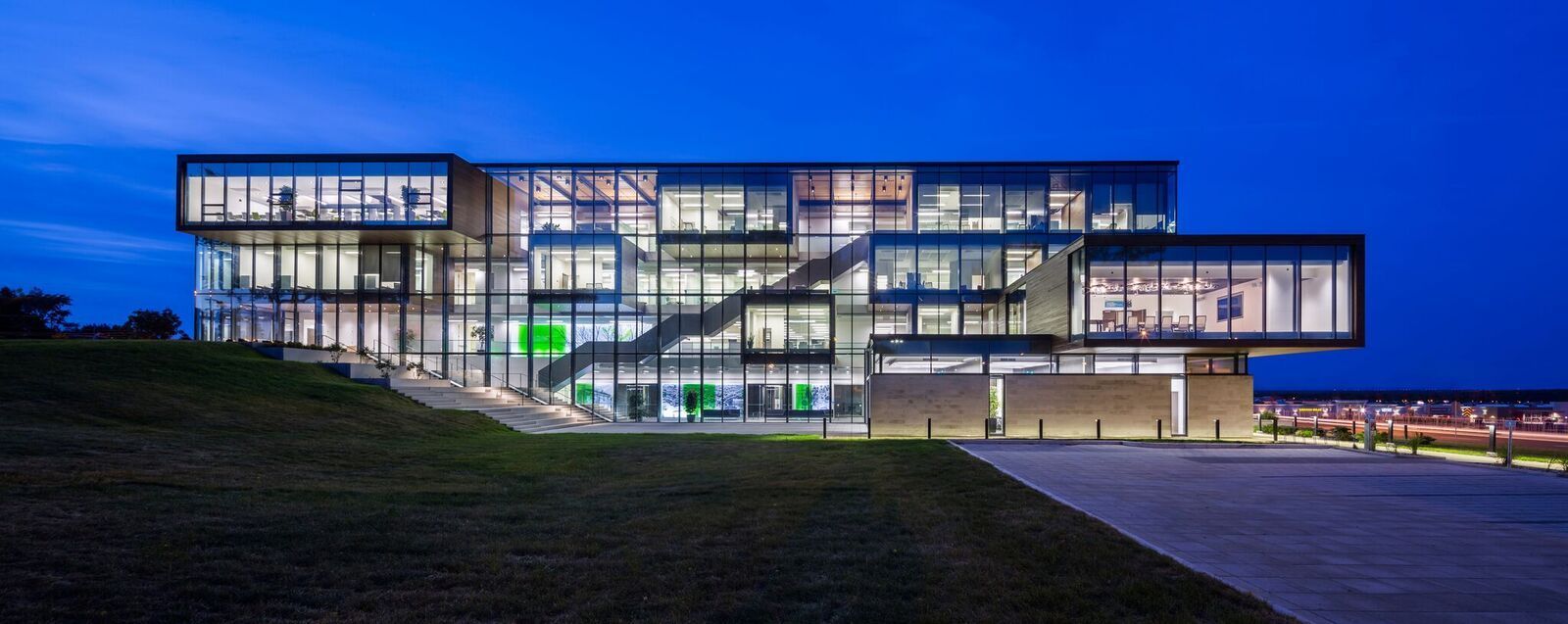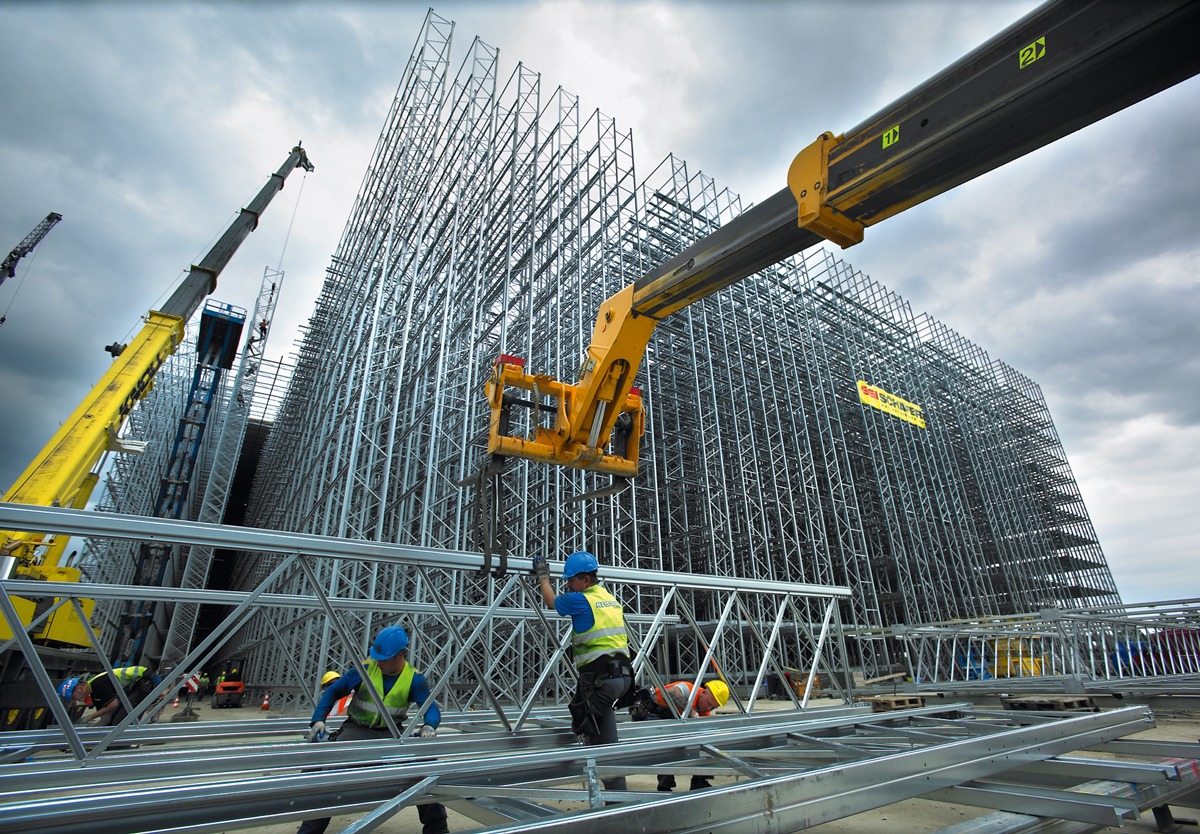

Increasing urbanisation, climate change and pressure on public sector budgets are just some of the issues facing our cities today. How can data and technology help? We supported the recent Smart Cities and Communities conference to share insight from industry leaders. Here’s what we learned:

There was consensus that a ‘digital by default’ approach should be adopted in order to ensure policy making is a citizen-centric process and provide a myriad of benefits to the market. Just some of the digital tools and technologies mentioned include:
City Information Models not only offer 3D visualisations of proposed changes to cities, but also use data to forecast how planning proposals will impact on air quality, social infrastructure and quality of life for citizens. This offers benefits to both developers who are able to save time and money using digital simulations of plans before work begins and to citizens who are engaged in the planning process much earlier on, avoiding negative reactions from communities.
AR is another technology being used to visualise new builds, amend proposals before work begins and aid community engagement by showing consequences, both good and bad, of proposed plans. This includes data about changes to business rates, the number of jobs that would be created, the environmental impact, which roads would need to be closed during building works and much more.
Geography (specifically location) is vital to successfully delivering key initiatives to make our cities smarter; there has to be a common frame of reference that is easily identified. GIS is already being used by many governments around the world to enable sharing of information securely and to engage citizens to make the community smarter.
Through GIS it is now possible to publish information about the status of key initiatives using engaging interactive maps and to crowd source from citizens to provide the data needed to target and focus the initiatives.
Will we be using chatbots to build planning applications in future? Stefan Webb, Head of Projects at Future Cities Catapult, argued that repetitive tasks involved with planning applications are likely to be automated in future, through the use of chatbots.
This means sharing live data and building API’s so that data can be used in a meaningful way to support data exchange and allow citizens to play a key role in governance.
As data and technology plays a bigger role in resolving some of the issues facing our cities today, the need for standards becomes more and more important.
For example, certain data sets and information should be used in the same way when making a planning application, yet currently everyone does the same thing in slightly different ways. Standards around information management would ensure a consistent and more efficient approach to these sorts of tasks.
There was consensus in the room that technology alone will not solve all of the current problems facing our cities today.
The skills and leadership abilities to implement the right technology at the right time are vital in creating smart cities.
Knowing your audience and understanding how citizens want services delivered is also vital. He suggests that things should be made EAST: Easy to implement; attractive to citizens; social (that is, social norms and networks should be considered) and timely.
Handforth also suggests that in order to create smart cities, leaders need to be tech savvy and brave enough to handle criticism as companies go through digital transformation.
We also need to ensure that everyone has the skills needed to adapt to new ways of working. This includes being data literate, which is not to say that everyone necessarily needs to know how to code but people will need to be comfortable analysing data. Other skills include being able to translate and communicate what is and isn’t working effectively as well as the ability to continually test, learn and adapt.
Handforth suggests that institutionalising skills and knowledge can save companies huge amounts of time and money in the long term, so investing in employees is crucial.
The main point driven home at the conference was that a smart city is one that delivers key initiatives derived from the aspirations of its citizens. What this really means is that organisations, both public and private, need to work together, share information securely and engage citizens in shaping and delivering key initiatives to ensure cities are effective and sustainable for generations to come.
The industrial manufacturing industry has long embraced powder coating as the preferred method of applying paint to finished metal surfaces. A reduction in production costs, better coatings with improved corrosion protection, and the reduction of VOC emissions are some of the advantages. First developed in the late 1960’s, powder coatings work by applying a positively charged, dry, free-flowing powder to a grounded metal substrate. Curing in an oven allows the powder to flow together and form into a durable film after cooling.
When production requires small batches and non-continuous runs, the least efficient component of the process is the heating of both the curing ovens and pre-treatment solution tank. Rinsing the metal to be power coated with a pre-treatment solution is important because it ensures a uniform application. PB Metal Finishing Systems has designed a method of increasing the energy efficiency of production using their new Spray Save system.
The Spray Save system’s innovative solution takes advantage of available oven space by adding a heat exchanger to capture latent heat that would otherwise be wasted. The system is comprised of a closed, coupled pumping system that is fully valved and controlled complete with non-return valves. “Pre-treatment solution is taken at a low level from the tank thereby circulating the coldest area of the tank and also keeping the solution in movement and is then pumped through the stainless steel schedule 10 fully welded and tested heat exchanger. The return of the solution is passed back to the process tank continuously.”
At the beginning of the shift both the oven and pre-treatment tank burner should be switched on. Although the heat exchanger has the capacity to fully heat the pre-treatment tank, turning both on initially will save time. They estimate that during normal shift, the normal run rates of the pre-treatment tank heating can be reduced from 6.5 hour to only 1.5 hours. This happens without any addition load on the curing oven. This reduction in required heating translates into direct saving for operator.
With the continued and growing emphasis on sustainability in construction we could be on the verge of a radical shift in how we think about the current stock of buildings. The time may be coming when we stop planning for building replacement, and instead plan for building reuse. That in turn would significantly change the roles of designers and builders.
Pellentesque ornare sem lacinia quam venenatis vestibulum. Aenean lacinia bibendum nulla sed consectetur.Cras mattis consectetur purus sit amet fermentum. Sed posuere consectetur est at lobortis. Nulla vitae elit libero, a pharetra augue. Lorem ipsum dolor sit amet, consectetur adipiscing elit. Donec id elit non mi porta gravida at eget metus. Vestibulum id ligula porta felis euismod semper. Vestibulum id ligula porta felis euismod semper.
Commodo luctus, nisi erat porttitor ligula, eget lacinia odio sem nec elit. Integer posuere erat a ante venenatis dapibus posuere velit aliquet. Donec ullamcorper nulla non metus auctor fringilla.
Aenean eu leo quam. Pellentesque ornare sem lacinia quam venenatis vestibulum. Cum sociis natoque penatibus et magnis dis parturient montes, nascetur ridiculus mus. Duis mollis, est non commodo luctus, nisi erat porttitor ligula, eget lacinia odio sem nec elit. Integer posuere erat a ante venenatis dapibus posuere velit aliquet.

Pellentesque ornare sem lacinia quam venenatis vestibulum. Aenean lacinia bibendum nulla sed consectetur.Cras mattis consectetur purus sit amet fermentum. Sed posuere consectetur est at lobortis. Nulla vitae elit libero, a pharetra augue. Lorem ipsum dolor sit amet, consectetur adipiscing elit. Donec id elit non mi porta gravida at eget metus. Vestibulum id ligula porta felis euismod semper. Vestibulum id ligula porta felis euismod semper.
Aenean eu leo quam. Pellentesque ornare sem lacinia quam venenatis vestibulum. Cum sociis natoque penatibus et magnis dis parturient montes, nascetur ridiculus mus. Duis mollis, est non commodo luctus, nisi erat porttitor ligula, eget lacinia odio sem nec elit. Integer posuere erat a ante venenatis dapibus posuere velit aliquet.
Learn how to market your contractor business professionally. In depth knowledge of attracting clients with online marketing strategies and deep thinking about who you want your clients to be.
The housing industry has proceeded at a red-hot pace for several years running. An all-time record was set in 1998, when 886,000 new-site single family homes were sold. That represented a 10% gain from the robust total of 804,000 homes sold in 1997, and an 8.1% rise from the prior record of 819,000 units in 1977. Single-family housing construction accounted for $48 million of the total $125 million generated in the industry.

Pellentesque ornare sem lacinia quam venenatis vestibulum. Aenean lacinia bibendum nulla sed consectetur.Cras mattis consectetur purus sit amet fermentum. Sed posuere consectetur est at lobortis. Nulla vitae elit libero, a pharetra augue. Lorem ipsum dolor sit amet, consectetur adipiscing elit. Donec id elit non mi porta gravida at eget metus. Vestibulum id ligula porta felis euismod semper. Vestibulum id ligula porta felis euismod semper.
Commodo luctus, nisi erat porttitor ligula, eget lacinia odio sem nec elit. Integer posuere erat a ante venenatis dapibus posuere velit aliquet. Donec ullamcorper nulla non metus auctor fringilla.
Aenean eu leo quam. Pellentesque ornare sem lacinia quam venenatis vestibulum. Cum sociis natoque penatibus et magnis dis parturient montes, nascetur ridiculus mus. Duis mollis, est non commodo luctus, nisi erat porttitor ligula, eget lacinia odio sem nec elit. Integer posuere erat a ante venenatis dapibus posuere velit aliquet.
Pellentesque ornare sem lacinia quam venenatis vestibulum. Aenean lacinia bibendum nulla sed consectetur.Cras mattis consectetur purus sit amet fermentum. Sed posuere consectetur est at lobortis. Nulla vitae elit libero, a pharetra augue. Lorem ipsum dolor sit amet, consectetur adipiscing elit. Donec id elit non mi porta gravida at eget metus. Vestibulum id ligula porta felis euismod semper. Vestibulum id ligula porta felis euismod semper.
Aenean eu leo quam. Pellentesque ornare sem lacinia quam venenatis vestibulum. Cum sociis natoque penatibus et magnis dis parturient montes, nascetur ridiculus mus. Duis mollis, est non commodo luctus, nisi erat porttitor ligula, eget lacinia odio sem nec elit. Integer posuere erat a ante venenatis dapibus posuere velit aliquet.
The changes we are experiencing in our climate are affecting all of our lives. Every industry is being affected by what is happening, but is having an especially big impact on the construction sector.
Governments across the world are waking up to the fact that extremes of weather are rapidly becoming the norm. In many countries, they are gradually changing construction legislation to take account of this fact.

Across the world, new laws are being passed that require both residential and commercial builders to work to higher standards. Buildings that can withstand higher summer temperatures, colder winters, as well as floods and high winds, are now essential. In some areas of the world, they also need to be built to withstand earthquakes, and other natural disasters.
For those of us who work in construction this presents challenges, but also means that we are working in interesting times. In order to keep pace with the changing needs of our customers we have to learn new skills, as well as develop innovative building techniques, and materials.
Take for example the issue of flooding. This is become a big problem in many countries. In the UK, the government estimates that the cost of damage caused by flooding has now reached an average of £1.1bn per year.
The insurance industry believes that the cost could be even higher than that. In fact, the Association of British Insurers (ABI) estimates that the bill for the floods that occurred last winter will be closer to £1.3bn.
To date, the UK government has primarily responded to the threat by building more robust flood defences. For the most part these have been publically funded projects that are designed to protect specific areas, rather than individual buildings.
However, the construction industry, along with the environmental lobby, is urging the government to put together a comprehensive water management strategy. They particularly want the issue of surface water management to be addressed in an organised way. Many in the industry are suggesting that installing new land drainage pipe in existing developments, and including state of the art waste water systems in new housing estates and commercial buildings is the way to go.
Unfortunately, new legislation to make this a reality has yet to be drawn up. In the meantime, the construction industry is doing its best to provide protection for the buildings that they are working on.
They are doing so in response to concerns expressed by their customers. Increasingly, both residential and commercial clients are seeing the risk of flooding as a serious issue. As a result, they are raising the issue with both their architect and builder.
Innovative new products, for example automatic flood barriers, are gradually becoming available. These are expensive, but consumers are so worried about the risk of flooding that they are increasingly willing to pay for this new technology.
It will be interesting to see how the UK ends up responding to the threat of flooding, in the long-term. If you would like to read more about how the recent floods are likely to affect the UK construction industry, I suggest this article.
Organization is a concern that no construction business can afford to overlook. Inefficiency within the layout of an organization, workflow processes that may have become antiquated and overlooking the potential benefits that the latest technology may have to offer could all place business owners at a greater disadvantage than they might realize. The following three ways all highlight some of the most popular and effective ways that contractors and other construction service providers are able to ensure a higher level of organization in the days ahead.
One: Process Management Software
Relying on an outdated operational or workflow process could prove to be a far more
costly liability than many construction business owners may realize. Business process management (BPM) software can provide organizations with an easier way to design and implement new workflow processes as well as the means to assess and improve the effectiveness of their current efforts. BPM applications are widely used throughout a number of different commercial industries and more and more construction businesses are beginning to take note of the potential advantages the right digital resources may provide.
BPM software can be helpful in addressing any of the following issues:
“Staying flexible and adaptive is crucial for service providers who wish to stay competitive and profitable within the construction industry,” said Knowify. The features and solutions that BPM software has to offer often play a key role in ensuring that construction services are able to maintain a level of organization that can lead to greater success.
Two: Commercial Drones
Commercial drones that can allow smaller organizations to conduct cost-effective aerial surveys are no longer a resource that businesses can afford to discount. These devices are becoming increasingly popular throughout the construction industry where they can be utilized in order to locate the best building sites, provide a top-down view of large construction sites and projects and ensure that both business owners and their clients can enjoy a more complete and accurate picture of daily operations.
Aerial drones can be a critical resource for businesses who may be struggling to deal with any of the following issues:
Three: Restructuring an Existing Business
Improving poor organizational layout can help to optimize efficiency and ensure that businesses are able to make the most of their current resources. Failing to assess the effectiveness and organizational level of a company from time to time can make it far more difficult to address any issues that may be creating excessive waste, additional cost or poor employee performance. There are numerous benefits to be had when restructuring a small company, some of which may include:
Staying flexible and adaptive is an ongoing process, one that may require businesses to perform periodic assessments of their organization in order to identify any areas that may require attention or improvement. Just because the current structure of a business is able to meet the needs of staff, associates and clients today does not always means it will continue to do so in the future. Restricting efforts that take place on an annual or even seasonal basis can allow business owners to avoid many of the most common and costly problems that may stem from poor organization.
A forklift used at one construction site might not be the best for another. Specific construction tasks vary, as do weight and size needs. Terrain and environmental factors can make a difference when it comes to the effectiveness of your forklift. A forklift buyers guide like this can help you find the right forklift for your needs.
Pellentesque ornare sem lacinia quam venenatis vestibulum. Aenean lacinia bibendum nulla sed consectetur.Cras mattis consectetur purus sit amet fermentum. Sed posuere consectetur est at lobortis. Nulla vitae elit libero, a pharetra augue. Lorem ipsum dolor sit amet, consectetur adipiscing elit. Donec id elit non mi porta gravida at eget metus. Vestibulum id ligula porta felis euismod semper. Vestibulum id ligula porta felis euismod semper.
Commodo luctus, nisi erat porttitor ligula, eget lacinia odio sem nec elit. Integer posuere erat a ante venenatis dapibus posuere velit aliquet. Donec ullamcorper nulla non metus auctor fringilla.
Aenean eu leo quam. Pellentesque ornare sem lacinia quam venenatis vestibulum. Cum sociis natoque penatibus et magnis dis parturient montes, nascetur ridiculus mus. Duis mollis, est non commodo luctus, nisi erat porttitor ligula, eget lacinia odio sem nec elit. Integer posuere erat a ante venenatis dapibus posuere velit aliquet.
Pellentesque ornare sem lacinia quam venenatis vestibulum. Aenean lacinia bibendum nulla sed consectetur.Cras mattis consectetur purus sit amet fermentum. Sed posuere consectetur est at lobortis. Nulla vitae elit libero, a pharetra augue. Lorem ipsum dolor sit amet, consectetur adipiscing elit. Donec id elit non mi porta gravida at eget metus. Vestibulum id ligula porta felis euismod semper. Vestibulum id ligula porta felis euismod semper.
Aenean eu leo quam. Pellentesque ornare sem lacinia quam venenatis vestibulum. Cum sociis natoque penatibus et magnis dis parturient montes, nascetur ridiculus mus. Duis mollis, est non commodo luctus, nisi erat porttitor ligula, eget lacinia odio sem nec elit. Integer posuere erat a ante venenatis dapibus posuere velit aliquet.
Copyright 2022 by INNOVATECH All Rights Reserved.
